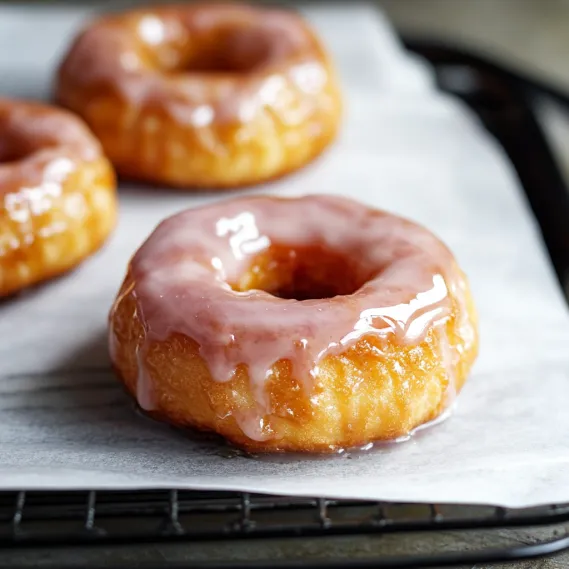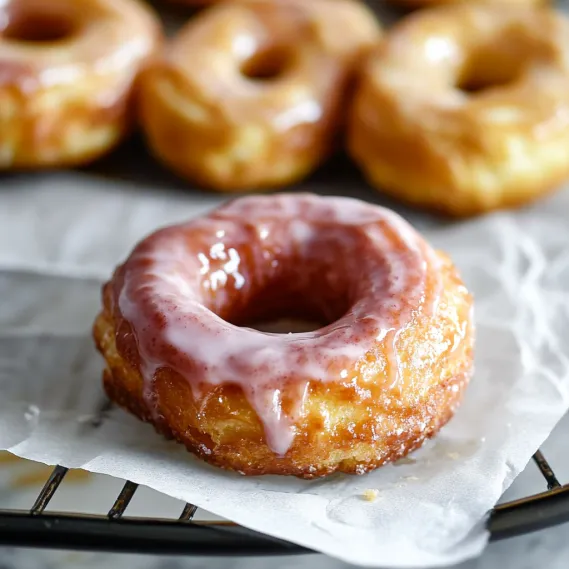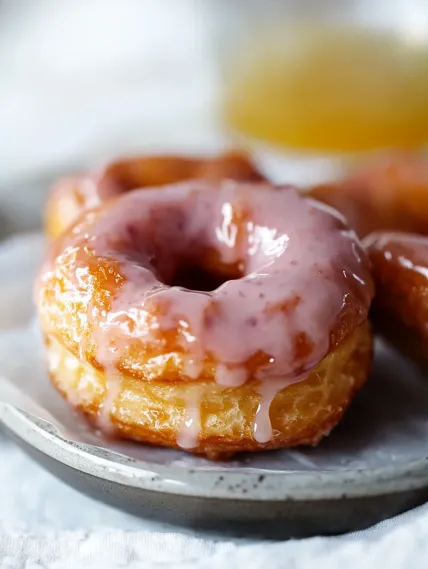 Pin it
Pin it
This classic French pastry gets a vibrant upgrade with a tangy blood orange glaze. The contrast between the light, airy cruller and the bright citrus topping creates a donut experience that's miles above anything you'll find at a chain shop.
I first made these crullers for a Sunday brunch with friends, and they've become my signature dish whenever someone stays overnight. There's something magical about serving these still-warm with coffee as everyone gathers around the kitchen island.
Ingredients
- For Crullers
- Unsalted butter: Adds richness and helps create that distinctive cruller texture
- Water and milk: Create the perfect moisture balance for airy pastries
- Vanilla bean paste: Provides deeper flavor than extract; look for one with visible beans
- Sea salt: Enhances all flavors; use flaky sea salt if you have it
- Bread flour: Gives the perfect structure due to higher protein content
- Large eggs: Provide structure and lift; always use room temperature
- Vegetable or canola oil: Choose a neutral oil with a high smoke point
- For Glaze
- Confectioner's sugar: Creates a smooth base for the glaze; sift to avoid lumps
- Blood orange juice: Adds vibrant color and tangy flavor; in season winter through early spring
- Whole milk: Thins the glaze to the perfect consistency; full fat creates the best texture
How To Make French Crullers with Blood Orange Glaze
- Prepare the choux pastry:
- Combine butter, water, milk, vanilla bean paste and salt in a medium saucepan. Bring to a full boil over medium-high heat, watching carefully as it can bubble over quickly.
- Add flour and cook:
- Once boiling, remove from heat and add all flour at once. Stir vigorously until completely incorporated. Return to low heat and continue stirring for 1 to 2 minutes until a film forms on the bottom of the pan. This crucial step cooks out excess moisture.
- Cool and add eggs:
- Transfer dough to a medium bowl and let cool slightly for 3 to 4 minutes. Using a hand mixer on low speed, gradually add whisked eggs a little at a time, fully incorporating before adding more. The dough should stretch about 1½ inches between your fingers without breaking. Mix an additional 2 to 3 minutes until smooth and pipeable.
- Pipe the crullers:
- Spoon dough into a piping bag fitted with a 1.5-inch star tip. Cut twelve 4x4-inch parchment squares and draw a 3 to 3½-inch circle on each as a template. Pipe dough in circles on each parchment square.
- Fry to golden perfection:
- Heat oil to 360–370°F in a heavy-bottomed pan. Place each cruller dough-side down in the hot oil with its parchment square. After about 10 seconds, the parchment will release and can be removed with tongs. Fry 2 to 3 crullers at a time for approximately 3 minutes per side until golden brown.
- Glaze while warm:
- Whisk together confectioner's sugar, blood orange juice and milk until smooth. Dip the top of each warm cruller into the glaze, allowing excess to drip off before placing on a wire rack to set.
 Pin it
Pin it
The blood orange element is what makes these truly special. I discovered this variation after returning from Sicily where blood oranges are celebrated. Now I look forward to blood orange season every winter just to make these crullers. My kitchen fills with the most amazing citrus scent as I squeeze the juice for the glaze.
Storing French Crullers
Crullers are truly at their peak freshness within hours of making them. The crisp exterior and airy interior begin to change quickly once cooled. If you must store them, place in a paper bag at room temperature for up to 24 hours. Never refrigerate crullers as this accelerates staleness. For longer storage, freeze unglazed crullers in a single layer, then thaw at room temperature and glaze before serving.
 Pin it
Pin it
Troubleshooting Your Crullers
The most common challenge with crullers is achieving the perfect consistency of the choux pastry. If your dough is too runny, your crullers will spread rather than hold their shape. Add an extra tablespoon of flour. If the dough is too stiff, your crullers will be dense rather than airy. Beat in a small amount of additional egg. Maintaining consistent oil temperature is crucial too. If your oil is too hot, the outside will brown before the inside cooks. Too cool, and the crullers will absorb excess oil and become greasy.
Seasonal Variations
While blood orange season typically runs from December through May, you can adapt this recipe year-round. In summer, try Meyer lemon or passion fruit glaze. Fall brings opportunities for apple cider glazes with a hint of cinnamon. During winter holidays, enhance blood orange glaze with a touch of cranberry for extra tartness. Spring welcomes floral notes; try adding a touch of lavender to a standard orange glaze for a sophisticated twist.
Frequently Asked Questions
- → How do I ensure the crullers hold their shape?
The dough should be thick enough that it holds its shape when piped. Test its consistency by stretching a small piece to ensure it reaches about 1.5 inches without breaking.
- → Can I use a non-stick pan for the dough preparation?
While you can use a non-stick pan, a film won't form on the bottom and sides. This doesn't affect the final result, but it's a step to note.
- → What’s the best way to regulate oil temperature?
Use a deep fry candy thermometer attached to the side of the pan. Regularly check the temperature to keep it between 360 – 370˚ F.
- → How long do these crullers stay fresh?
Crullers are best enjoyed fresh on the same day they’re made. Store leftovers in an airtight container for up to one day.
- → What can I substitute for blood orange juice?
If blood orange juice is unavailable, you can use regular orange juice, but the color and tangy flavor will differ slightly.
- → Can I bake crullers instead of frying them?
Traditionally, crullers are fried to achieve their iconic texture. Baking might not yield the same crispness and lightness.
